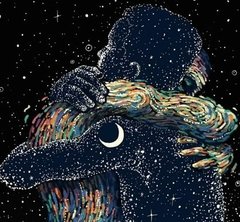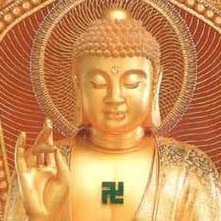Search the Community
Showing results for tags 'Emptiness'.
Found 14 results
-
Buddhist Practice Is Not For Spacing Out Buddhism is very keen on emptiness and unselfishness (non-self), but it's not spaced out or navel gazing hippie spirituality. Why? Buddhism teaches that there are two merits to be accumulated: the merit of virtue & the merit of emptiness. The former requires compassionate action and true altruistic love for others because only these realize what is truly unselfish behavior. This is where many people — especially the self-initiated Western folk — interested in internal cultivation get a failing grade: they simply disregard perfecting conduct as a supplement at best or as a needless annoyance at worst. You wouldn't find any traditional Buddhist teacher supporting such disregarding notions. People who claim to understand about abiding in emptiness might just get swallowed by a false impression instead. I have seen quite a few Western yogis (even more abundantly outside of this forum) who claim to attainments and speak of their self-grasping having diminished, but neither do their conduct nor yogic accomplishments align with the traditional criteria at all. Who is fooling whom? No virtue, no bodhicitta, thus no advancing in the two accumulations. For those who wish to practice the Buddhist way: Don't go cherry picking what is easy or you may end up doing the spiritual equivalent of glue huffing or sniffing farts and thinking yourself really civilized and top of the game. Please have some grounded skepticism instead and try not to be impressed by any appearance of "emptiness" because that itself would also be another illusion.
-
I started as a Buddhist practicioner cause I read on a reddit forum how Jhanas could increase human intelligence. For some reason as young as I could remember I always felt humans could be better and we were not using our full mental power. At some point I came across Daoism. I found their extremely datailed and logical approach quite fascinating. And in studying daoism I came across Bill Bodri who seemed to equate the 2 different traditions. It almost seems like they are doing the same thing through different approaches. Someone said the buddhism achieves freedom from karma or enlightenment by making ones consciousness egoless while daoism seems to make ones consciousness so powerful that its karma cant pull it back to earth what they would call the yang shen. Furthermore the jhanas and the transformation of the three treasures were seen as the same thing were first jhana body is full of jing hence the pleasure or what they call piti and sukkha. In second Jhana the jing transforms into chi. Hence the feeling of joy and loss of body awareness, By third jhana the chi turns to shen. Hence the contentment. By fourth jhana you reach emptiness. Hence the equanmity. Then the immaterial jhanas where one breaks the emptiness. And finally enlightenment where one unites with the Dao. What do you giys think?
-
I started reading taoist yoga and i must say all the nei dan information dont look like instructions to me. They look like biographical information of the alchemical changes of the energy body as one cultivates towards samadhi. There are too much steps and processes to be aware of that I believe alchemy infromation was more like sign posts that your on the right track rather than steps to actually follow. I mean there are easier ways like anapanasati and skeleton visualization from the buddha or samatha(concentration) practices in general. Instead of the risky practice that is alchemy. And yes you can not achieve samadhi without alchemical changes happening inside you. Else it would be false samadhi. Nan Hua Chin said that samadhi without change in your body is a false teaching that has infected buddhism especially zen. He encourages people to learn about alchemy only to use it as a referral that they are on the right track rather than an instruction manual. His book Tao & Longevity: Mind-Body Transformation shows how alchemical changes happen in the body using practices like anapanasati from the buddha. He says its based on the rule of the dao that extreme yin gives birth to yang. So the stillness from anapanasati where at some point you slow down to the point of having your breath, pulse and thoughts stop(hsi), gives birth to the yang chi being born. No need for all the alchemical jargon just slow down and become still and the internal alchemy will take place. its like our bodies mimicking creation. Where from wuji came taiji and from taiji came yang chi of heaven. The secret of immortality. It has also been said in yoga that physical immortals are in samadhi 24/7 hence they are constantly in touch with the yang qi of heaven. So if alchemy is just another way to samadhi or wuji why do Daoist treat it like its some super secret when there are even safer and less cumbersome ways of getting to samadhi. After all the emptiness is called nirvikalpa samadhi in other traditions.
-

The role of knowledge in spirituality and the destruction of the mind
dwai posted a topic in Hindu Discussion
Most of us here have a practical background, having spent many years in the practice of a meditative method or art (e.g., qigong, yoga, taijiquan, etc). It is true that having a practice is essential for growth and learning. And yet, many seem to gloss over the role of knowledge. There are two kinds of knowledge -- one that is taught to us by another (such as a teacher, friend or some other medium -- book, etc). Let us call this "external knowledge" or "indirect knowledge". The other is the knowledge that is directly known -- usually as a result of a regular and diligent practice of the method of our choice. Let us call this "internal knowledge" or "direct knowledge". I've seen many practitioners of spiritual arts scoff at the external knowledge because it is considered somehow inferior to the "directly" known, internal knowledge that is supposed to be the fruit of our (glorious/valiant/heroic/add your own adjective here) efforts. And yet, we would not have embarked upon the path of our choice if we didn't have an external source of knowledge to guide us throughout our journey. It is quite possible that some people, due to their karmic influence are easily able to enter into deep meditative states. But that may not result in full awakening, without proper initiation into the external knowledge. The reason being, when the deep meditative states (samādhi) are entered, there is no mind involved (or minimal mind is involved). While repeated immersion into these deep states can result in thinning of the modifications of the mind, the mind still remains functional once one exits from such states. In the vedantic tradition, the entry into samadhi is called "mano laya" (or pausing of the mind). This is considered an intermediate stage of spiritual evolution. Once the practitioner exits from the samadhi, the mind resumes its functioning (perhaps with not as much vim and vigor as it did prior, but it generally tends to gather steam and pick up from where it left off eventually). The only way to cause what in vedanta is called "mano nāsha" (mind cessation) is to deliberately and methodically work with the external knowledge (as taught by the teachers and texts) and go through a process of intellectual assimilation. The mind has four components, namely the ego, the thought field, the storehouse of memories and impression and the intellect. For knowledge to be integrated, it has to be worked on with the cooperation of the mind (ego-thought field-storehouse-intellect). Key among them is the intellect. Whatever the intellect identifies with, the ego will do its level best to protect/maintain that. If the intellect identifies with the body, the ego will strive to maintain that identification. If the intellect identifies with the mind, ego will strive to maintain that identification. Therefore, the intellect needs to come onboard with the process of spiritual development. Once the intellect is onboard, all the other components of the mind will follow its lead. So with the study and contemplation on the external knowledge using the intellect, the intellect needs to be convinced of its 'place' in the grand scheme of things. When the intellect understands completely that it is merely a function of the mind, and that the mind is nothing but a process arising in awareness, the intellect will gradually relinquish its need to identify with anything. It might initially start by giving up identification with the body and the mind. Typically the intellect latches onto the idea of being "The Non-dual Self/Awareness". And it is a far better proposition that being identified with the body/mind. Then the seeker wants to constantly abide in this "non-dual awareness". Of course, life usually has other plans, so the feeling of non-duality, and the feeling of duality keep coming and going, oscillating between the two phases at regular intervals. This leads to great frustration in the intellect of the practitioner. And then one day the realization occurs, that what we truly are, is aware of both the duality and non-duality that seems to arise in the mind. And on that day, the intellect gives up completely, and the ego disappears, as it has nothing to defend anymore. This results in a fully non-grasping mind, essentially a mind that has ceased to operate as it used to before spiritual practice started. And therein is the direct knowledge or internal knowledge, which is nothing but that which is aware of both the apparent duality and non-duality.- 3 replies
-
- 8
-

-

-
- nonduality
- advaita
- (and 4 more)
-
The Importance of Anatman/Anatta in Buddhism Many people question whether the Buddha secretly taught a self. Although the vast majority of Buddhists suttas and sutras deny the existence of a self, some people believe that this is a provisional teaching and not to be taken as an ultimate teaching. I offer some conceptual thoughts on the matter, understanding that concepts cannot really capture the teaching. After many years of study with great masters, I have come to realize that not only is no self important to Buddhism, it is at the very heart of the teachings. I encourage people who are really interested to find a proper teacher and practice to fruition. 1. From a Mahayana point of view, the self is empty. People often mistake “emptiness” and think “nothingness.” In English, when we say the glass is empty, we mean nothing is in the glass. But this is not what the Buddhists mean. Buddhist usually explain emptiness in one of two ways: a. Emptiness means the lack of an independent, unitary, permanent self. b. Emptiness means that what appears is not graspable. These two are not opposed. If something is graspable, then it would have an independent, unitary, permanent self. Likewise, if something has an independent, unitary, permanent self, it should be graspable. If we can grasp something, it should be fixed and findable. 2. The first consequence of emptiness is change or impermanence. Because nothing is fixed, everything changes. If things has fixed, permanent selves, they would not change (i.e. they would be permanent). In other words, ice would always be ice. Atoms couldn’t change position or move. Our bodies would never age, grow sick, or die. From a spiritual point of view, this is good news. If a person is ignorant, such a person would always be ignorant. If a person is bound, such a person would always be bound. But because these things are empty, this is not the case. Freedom is possible. Even more important, creation is possible. From a Buddhist point of view, because there is nothing fixed, anything can arise. In this case, the universe has arisen. 3. The second consequence of emptiness is dependent origination. Dependent origination means that everything is interdependent. Remember, emptiness means there is no independent self. If things were independent, they could not have any effect on one another. An ice cube in a glass would never melt, or cool the ice because the ice would always be ice and the water would always be water at a certain temperature. Consider all the causes and conditions that led me to write this and you to read it: first we need a universe, a sun, the earth, a body, parents, civilization, etc. Everything has come together to produce this moment. Emptiness allows for relationship. Without emptiness, two things would never relate to one another. Things would either be permanently the same, or permanently different. There could be no interaction. 4. The third consequence of emptiness is karma. Actions have consequences. If people had fixed, permanent, immutable selves, then there would be no point in spiritual practice. One would be as one is, and there is nothing that can be done about. There would be no problem with murder, theft, and lying. 5. The fourth consequence of emptiness is dissatisfaction, or dukkha. Because nothing is permanent, nothing can give us permanent satisfaction. 6. The fifth consequence of emptiness are the Four Noble Truths. The Four Noble truths state that there is suffering, there is a cause for suffering, there is a cessation to suffering, and there is a way to end suffering. From a Buddhist point of view, the problem is clinging and grasping. However, because things are empty, we cannot cling or grasp onto them. This fundamental ignorance is the cause of suffering. Accordingly, we try to cling and grasp onto what cannot be clung to or grasped. The solution in this case is to see things are they are (empty) and cease clinging and grasping (cessation). 7. As stated, emptiness is also not nothingness--- this would be nihilism. So how to things appear? The typical Buddhist examples are to compare the mind to space and phenomenon to a dream. a. The mind is compared to space. It has no fixed characteristics. Because it has no fixed characteristics, anything can appear. Unlike space, the mind has an ability to know the objects that arise within it. Some people are unable to understand this, because they think that one prevents the others. If the mind knows, it must have a self. Or if it is empty of characteristics, it must know. However, experience shows that this is not the case: the mind is empty, and yet it knows. Consider the electron that can appear sometimes as a wave and sometimes as a photon. Things don’t always fit into tidy boxes. b. Objects are compared to dreams. When we dream at night, we may have bodies, eat, swim, run and play like we would normally do. The substance of dreams and the substance of the waking state are the same: we experience colors, sounds, sensations and so on. However, it is easy to see that a dream is completely unreal. Accordingly, the doctrine of emptiness is woven very deeply into Buddhist teachings. If we eliminate emptiness and no self, then the entire teaching is incoherent. There is a lot of resistance to some of these Buddhist teachings. One of my teachers has said that when we find resistance to a teaching, we often find the ego trying to steer us away from teachings that threaten it. And there is no more threatening teaching to the ego than no self. I know other paths take other approaches. I am not putting forth the Buddhist path as the supreme or only path, but only as one possibility.
-
I'm curious what examples of absolutes others harbor as I find the concept to be inapplicable to all but a few very abstract concepts related to experiences which are really beyond words. It's usually a red flag and thus unsettling for me whenever a conversation enters into notions about complete, absolute, unchanging, never ending, undiminishing, etc, anything. Specifically I find the seemingly inherent notion within the common definition of absolute of any thing completely independent of all other things to be impossible. As to unchanging, or undiminishing... perhaps a few conditions I have experienced seem to fit the notion as I list below, but only from my current perceptual model, which is far from absolute and thus, for me, is not really considered definitive... it all seems very subjective and relative. Anyway, here's what the all mighty dictionary says Absolute: as an adjective: 1: not qualified or diminished in any way; total. "absolute secrecy" 2: viewed or existing independently and not in relation to other things; not relative or comparative. "absolute moral standards" as a noun: 1: a value or principle that is regarded as universally valid or that may be viewed without relation to other things. "good and evil are presented as absolutes" The notions of second definition of the adjective version and the noun definition of absolute moral standards and good and evil being absolute are ridiculous in the extreme for me. Utterly human mind notions that are fluid in nature based on cultural, familial and individual filters and as malleable as the context in which they are used to serve the needs of the one speaking in the current moment. Without any hardcore certainty, I consider my experiences of the concepts of Void... Emptiness... Clarity... and Awareness as potential examples for absolutes. These seemed to embody for me, as I recall them, to be experientially beyond the potential for diminishing and thus seemed to be unchanging which would satisfy one of the inherent conditions of the definitions above for an absolute. This however is based on my recall and memory of the experience and so pulls in all of my perceptual filters based on my reality tunnel and thus adds a rather high degree of malleability. I really can't fathom how they are in any provable way, independent from each other, or the rest of experiential perception based 'reality', nor can I conceive of a manner in which anyone could establish that they are, in fact, independent. So what is an absolute?
- 152 replies
-
My teacher emphasizes emptiness. The feeling we get when we are doing taiji forms or qigong etc - that is emptiness. It feels like something, but perhaps it is the absence of something we feel. Thoughts?
-
.
- 36 replies
-
- 2
-

-
- buddha
- enlightenment
-
(and 1 more)
Tagged with:
-

I could use some help identifying a particular experience
ssmith7 posted a topic in Daoist Discussion
There is stillness all around, now. I imagine it has always been there. Both inside my body, your body, and all the 'space' that seperates us and everything else. What is interesting about this empty stillness is that it can act as a medium for consciousness to travel through. I am not sure if the stillness and consciousness are mutually exclusive sources. It is through this space that I am able to connect with other sentient beings, feeling their energy, transmitting my own, etc. It is possible, I believe, to stay in contact with this empty stillness all day without mental strain. To wear it within you. In fact, this stillness seems to exists seperately from intellectual cogitation entirely. I know you must know what I am speaking of. What do you call it? Is it the seat of the eternal? Is this the 'void' that I am sensing from within my own body? Again, thank you for the time and consideration -

Tsongkhapa's Lam Rim Chen Mo w/ audio and video commentaries
Simple_Jack posted a topic in Buddhist Discussion
I ended up doing a search on the internet to see if there were any video and/or audio commentaries on Lama Tsongkhapa's Lam Rim Chen Mo/The Great Treatise On The Stages of The Path To Enlightenment from any venerable teachers...Lo and behold, I found some resources which I think are good enough to share. For anyone interested you can read the text from a 3 part translation on amazon.com: http://www.amazon.com/Great-Treatise-Stages-Path-Enlightenment/dp/1559391529 A collection of mp3 files from a set of teachings on this text by H.E. Choden Rinpoche: http://www.lamrim.com/lamrim/ Audio commentary by Abbess Thubten Chodron: http://www.thubtenchodron.org/AudioLibrary/index.html A link to someone's youtube channel, that has a set of talks given by H.H the Dalai Lama, on the Lam Rim Chen Mo at Lehigh University in Bethlehem, PA (also included in this link is a partial listing of his other teachings on this text given elsewhere): http://www.youtube.com/playlist?list=PL63437123ADC315D0 Another youtube channel with a video series of talks on the Lam Rin Chen Mo: http://www.youtube.com/user/ChenrezigCtr?feature=watch This is from the official website of H.H. the Dalai Lama which has recordings of numerous teachings and appearances at events, press meetings, etc. I'm posting a link to a series of talks on Atisha's Lamp For The Path To Enlightenment and Tsongkhapa's Great, Middling, and Concise Treatises on the Stages of the Path to Enlightenment: http://dalailama.com/webcasts/post/267-18-great-stages-of-the-path-lam-rim-commentaries Other recommended video/audio commentaries from that website: Je Tsongkhapa's Praise for Dependent Origination - http://dalailama.com/webcasts/post/226-praise-for-dependent-origination--avalokiteshvera-permission-initiation Je Tsongkhapa's The Three Principal Aspects Of The Path - http://dalailama.com/webcasts/post/289-the-three-principal-aspects-of-the-path- 117 replies
-
- 2
-

-
- Buddhism
- Tsongkhapa
- (and 5 more)
-
Hi I have had some interesting realizations. I have had some experiences with the 'clear light' that comes from the heart and manifests out of the eyes. I have written about these episodes, which I was calling 'satori moments' in various threads. The last post was here: http://thetaobums.com/topic/27071-difference-between-being-in-pure-land-and-clear-light/?p=413974 The jist of it is that, there is a channel which goes from the heart to the eyes. It is called the Kati crystal channel. If you can activate this channel by being relaxed and loving, a phenomenon occurs which can be described as "a waterous radiantly clear liquid-like substance comes out of your eyes and projects itself into the viewable scenery." The phenomenon is characterised by tremendous Bliss, Joy, Peace, the feeling that you are everything and a particular silence of the conceptual mind. So far, nobody has been able to confirm this experience. This is not a 3D visual effect; the world is seen as it appears, not holographic. The world (the scene you are viewing) appears normally except is much brighter, radiant, glistening. The feeling (to me) is like you are God looking into the eyes of God. Everything is love or one or the same taste. Yesterday, I was reading a book called "A Clear Mirror" - Traktung Dudjom Lingpa and I came across this quote: Hmmm! Perhaps my experiences are realizations of 'emptiness's true nature'. ! Dudjom Lingpa's meditation instructions are very similar to the types of practices that I have been doing.. The text that leads into the reference of the kati channel is here: A few days ago, after posting about the 'satori moments' I started contemplating the clear waterous substance that emits from the eyes as bliss, peace, joy, love, brilliant radiance.. I focused on remembering the phenomenon, examining it, remembering each aspect. Recalling the experiences was somehow setting it off again. And, it was right before my regular meditation time, so I went to meditate for an hour. I sat in my usual posture and started with my dedications/prayers. The bells from my "Insight Timer" went off, indicating the start of the hour long session. There were great streams of love and tingles coming from my heart. I could not 'meditate'. I decided to just let it go and sit. (I was going to do 1 hour of breath meditation). As the waves of tingles radiated out from the heart, I noticed that the space had opened up inside. This is the typical space that opens when the senses shut off. It is the space in which one can see the thoughts, visions, colors, lights, chakras.. etc.. However, this time I noticed that the conceptual mind was "behind" again, which was the same positioning of the conceptual mind during the satori moments. I just let it be. The vibrations radiating upwards from the heart grew more intense. There were subtle films or wisps of light moving all about in front of the conceptual mind. I just let it be and watched. Then, all of a sudden, a very clear face appeared in the front of the space, beyond the front of the brow. It was an image of Ramana. Ok. It sure seemed bright. The image did not go away. And then it moved! And then I felt this overwhelming love coming out of it. Could it be? Ramana? His hair was white. My conceptual mind kicked in and starting throwing up all these thoughts.. I was once again plummeting into the war of mind-games.. I fought off the con-mind as best I could and refocused on Ramana. There was one thought that got through.. "What if it wasn't Ramana? " So, I binded the image of Ramana in the name of Jesus Christ and watched. The image of Ramana did not disappear. What happened was very funny. Another vision of Jesus appeared behind Ramana! Now I was looking at Jesus and Ramana. Then, something even stranger happened. The image of Ramana became a full person standing tall, then that image became a full image of Jesus standing tall, and then that image became another outline of another body (who I thought may have been Gandhi) and then another image... That was too much for my conceptual mind to handle.. Thoughts started cascading out.. I re-arranged my orientation, took a deep breath and went back into meditation. There was Ramana again. This time, he was sitting on a wooden bench in what seemed to be a scene from India. There were not many plants, the sky was very blue and there was a small structure in the background that looked like a clay-walled hut. Then Ramana said to me "Come and sit with me". !! By this point I realized that perhaps this was the real thing. I could see the whole scene as if looking through a telescope. I had no idea what I should do. I went and sat with him. It was like being in a dream. He was wearing nothing but a large white cloth around his bottom. I could not think of anything to say! I just sat there, feeling the love and understanding. Then I thought of something.. I had always had dreams that I had lived in India before this present life. I had visions of steam locomotives, and this one strange three-story-building with no center. The building had a main floor and three surrounding balconies. So, I asked Ramana if I had lived there before. At once, I got more visions of India, the colors, the locomotives, the earthen buildings.. Lots of scenery. It appears that I have in fact been in Ramana's presence before.. Back on the meditation seat, I pulled out and started crying. I had no idea. Ramana! King of the heart! It took a few days to get over the initial shock of that experience. The mind must justify by thinking that time and space are only concepts and that the great gurus transcend these phenomenon quite easily. Lots to think about. For the last two days, I have uncovered some new insights. I'm trying to stay away from heart meditations because my conceptual mind is rebelling too much.. However, for some reason, I now realise how to enter the space of the mind quite easily. What you do is this: Focus on the little space just below and inside from the navel. Say the mantra "O" silently (internally) and keep it going.. Just "O".. one long "OOOOOOOO".. not "ou" as in 'you', just one long "O" as in 'bow'. AUM has no begining or end.. Just one long "O". What this does is it causes the lower dantien, the place belowe the navel to activate. It is the center of will. It is what you use when you "really try hard". It is what is starting and stopping the breathing too. It also gives off heat if you let it. Anyway, just keep the "O" going with no breaks in it, and then do breath meditation on the place just below the navel. Watch each breath, while visually/mentally looking at the point below the navel. There is a white light there, which helps you to focus. Within a few minutes of doing that, you will see that the space inside your body really opens up. It opens up like your heart opens up, in a vacuous space. Then, you will see visions very easily, but don't look at them. Keep looking at the point where the "O" is coming out of. Keep watching the motion of the lower abdomen, moving with each inhale and exhale. Listen to the "O". Focus on the breath and don't interfere with the breathing. You will start to notice that with each breath, a sort of membrane expands and contracts around the body, from inside the space. That is a good sign. You are seeing from inside the space. After a while, the dreams/visions come quite easily. It is easy because the "O" is also activating the throat chakra, which is the source of the dream world. You can play about in this meditation.. explore, experience the space. I'm seeing some wonderful colors, brilliant displays of patterns and structures, visions and things I've never seen before.. right at the place below the navel.. I have been doing this meditation for two days now, as my regular practice.. During the last meditation, my whole coarse consiousness collapsed, I swooned and almost successfully passed into the beyond. I failed again, but I'll keep trying. It is so hard just to let go. TI
- 15 replies
-
- 6
-

-
- kati channel
- emptiness
-
(and 2 more)
Tagged with:
-
So, I'm going to start with an article that explains emptiness differently, compared to how it's usually presented in Mahayana. It's very down to earth (so to speak) and practical:
-
As a cultivator, it is very important to learn about the gradations of internal cultivation. Generally, we use the following level classification: I. Refine Jing (vital essence) into Qi: this stage contains inside and outside Qi moving, small ZhouTian opening and Entryway opening three steps. II. Refine Qi into Shen(spirit): this stage contains internal and external opportunities appear, big ZhouTian moving and the Entryway losing form three steps. III. Refine Shen return emptiness: this stage contains primordial Shen appear, Shen baby in vitro and millions of incarnations three steps. IV. Refine emptiness fit Tao
-
- 2 replies
-
- 1
-

-
- Buddha
- Starting Young
-
(and 8 more)
Tagged with:









